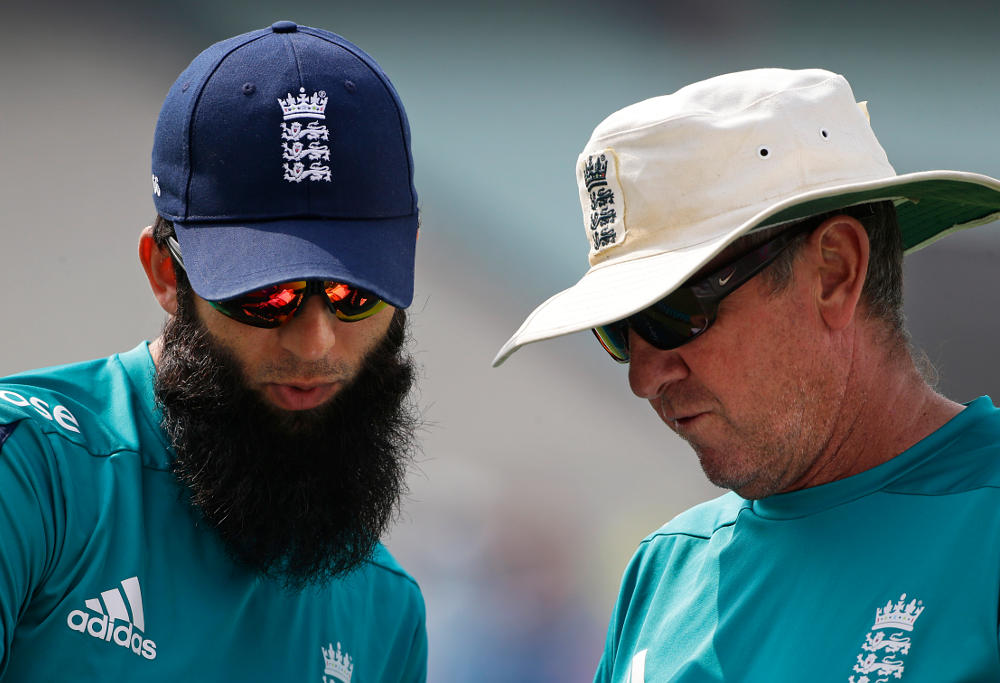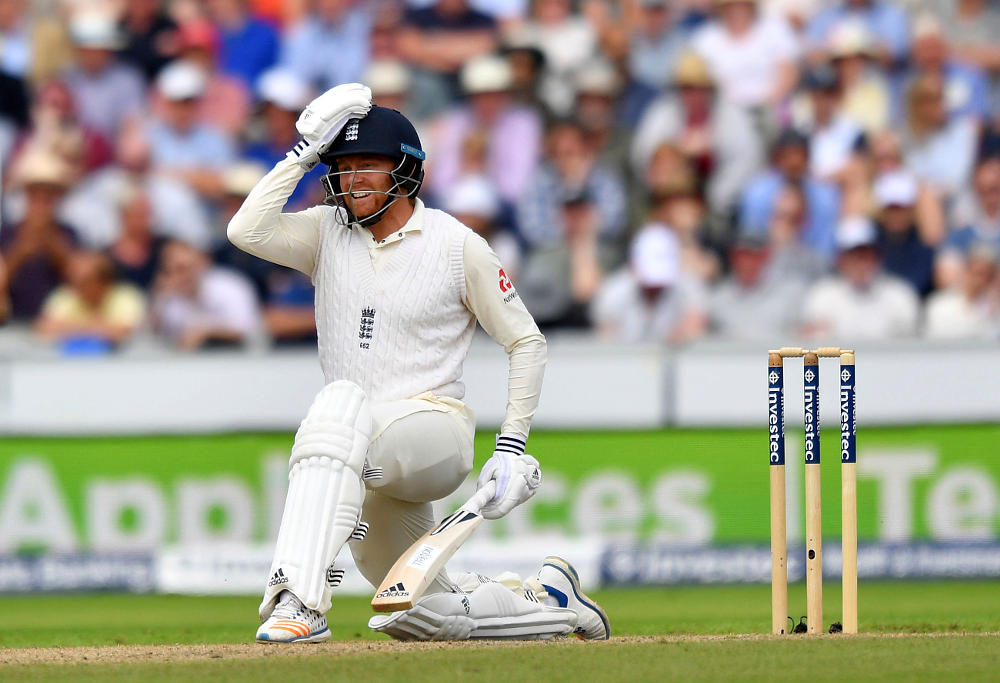The Ashes would be less fun without mug pundits throwing out predictions, so here are four of mine ahead of the first Test on Thursday.
England will win the day-night Test
England are fortunate the day-night match is early in the series, with the second Test to be played with a pink ball in Adelaide.
The pitch for this match is likely to be similar to a traditional English surface – slow and moist, just like it was in the first two day-night Tests at Adelaide, in the recent pink ball Sheffield Shield match and in England’s day-night tour match. Such a deck is needed to protect the pink Kookaburra ball, which degrades far quicker than the red version.
Both of the day-night Tests at Adelaide have been fairly low-scoring affairs in which the quicks prospered. In the pink ball Shield match at the ground three weeks ago, South Australia were rolled for 92 on Day 1 and New South Wales managed to make just 242 in the first dig and 4-57 in the second innings. In England’s second warm-up match, under lights at Adelaide, the tourists made only 293 and 207 before rolling the Cricket Australia XI for 75 in their second dig.
In James Anderson, Stuart Broad and Chris Woakes, England have three bowlers who are elite on such juicy pitches. Anderson and Woakes ran amok with the pink ball at Adelaide, taking match figures of 5-42 and 6-65 respectively. Broad didn’t play in that match, but the memories are fresh of him obliterating Australia with 8-15 on a lively Trent Bridge deck in the last Ashes.
That pace trio will pose a huge challenge to the Australian batting line-up in conditions which should be very familiar to them. It is this familiarity with slow, seaming pitches which should also benefit England’s batting line-up. While England’s expected top five of Mark Stoneman, Alastair Cook, James Vince, Joe Root and Dawid Malan looks shaky, they are all vastly experienced on such surfaces, which are commonplace in county cricket.
I predict the Adelaide Test will be a thriller, just like the inaugural day-night match, with England pinching a win to level the series 1-1 after Australia’s commanding victory in the first Test at Brisbane.

(AP Photo/Rick Rycroft)
Moeen Ali will average 60-plus with the ball
This may seem very harsh given Moeen is fresh from averaging 21 with the ball across seven Tests in England’s home season, but there are many reasons to believe England’s number one spinner will not go close to replicating such form in Australia.
Firstly, prior to that recent purple patch, Moeen had averaged a tick under 50 with the ball over his previous 25 Tests.
Secondly, Moeen was butchered by the Australians last time around, averaging 45 with the ball and conceding an incredible 4.41 runs per over despite being on home turf. Those figures are even worse when considered in context – Moeen did well in the first Test when Australia tried to slog him but became toothless after that as they realised they could score freely from him without taking risks due to his poor control.
Moeen took just seven wickets at 60 across the final four Tests of that series, giving up 4.5 runs per over, while his opposite number Nathan Lyon averaged 30 and conceded only 3.17 runs per over in those matches.
Thirdly, Moeen is far less effective on the road than at home, averaging 44 with the ball from his 16 away Tests compared to 33 in England.
Fourthly, and probably most importantly, Australia is the spinner’s graveyard of world cricket – almost every visiting Test spinner gets destroyed here. Pakistani leg-spinner Yasir Shah arrived Down Under last summer with good reason to believe he could prosper against Australia.
Yasir was ranked in the top five Test bowlers in the world, was averaging an incredible 6.2 wickets per match across his 18 career Tests and had destroyed Australia on flat decks in the UAE, taking 12 wickets at 17.
He left Australia with his confidence in tatters having been utterly mauled, with eight wickets at 84 while conceding an astronomical 4.53 runs per over. The man widely considered the best spinner in Test cricket, Ravi Ashwin, has fared little better in Australia, averaging 54 with the ball across his six Tests.
I would rate Moeen’s bowling similar to that of fellow offie Mark Craig. The Kiwi spinner toured Australia two years ago and across three Tests averaged 66 while going at close to five runs per over. Moeen faces a similar fate this summer.

(Image: AP Photo/Saurabh Das)
Jonny Bairstow will make more runs than Alastair Cook
The middle order will be the place to bat for an Englishman this summer. Mitchell Starc and Josh Hazlewood are a brilliant new-ball pair who excel in Australian conditions, expertly exploiting the bounce on their home pitches. Both men returned to the Shield recently in sharp nick, Starc taking 17 wickets from two matches and Hazlewood 6-73 in his sole outing.
Cook has a very poor Ashes record, having only had one good series from six campaigns against Australia, and that was seven years ago when he was still at his peak as a Test batsman. Across his other five Ashes series, Cook has averaged 27, 24, 27, 24 and 36 for a total of 1,351 runs at 28.
Starc will again trouble Cook with his late out-swing, while Hazlewood is an elite bowler against left-handers. I predict Cook will once more average in the 20s with the bat this series.
Taking up the slack will be the supremely talented Jonny Bairstow. Australian fans have not seen the best of England’s wicketkeeper-batsman, who has averaged just 24 with the bat in his nine Ashes Tests.
But since the last Ashes, Bairstow has improved dramatically, making 2,113 runs at an average of 47 and becoming a decent gloveman. These days Bairstow is neck and neck with South Africa’s Quentin de Kock and New Zealand’s vastly underrated BJ Watling as the best keeper-batsman in Test cricket.
Bairstow’s assertive batting should be well suited to the hard Australian pitches. The Test surfaces most similar to Australian pitches are those in South Africa, and Bairstow dominated there two years ago, clattering 359 runs at an average of 72 and at a strike rate of 72.
Bairstow looks likely to bat at six, and I predict he will be England’s second-highest run-scorer for the series after Joe Root, with the English captain to have a brilliant series.

(Image: Anthony Devlin/PA via AP)
Chris Woakes will be exposed as a home track bully
There is a strong case to be made that Woakes is the biggest home track bully among all current Test bowlers. In England he is a gun, averaging 24 with the ball from 11 Tests as he exploits the generous swing afforded by the Dukes ball and the seam movement provided by the sometimes juicy home surfaces.
But whenever he’s left England he’s been reduced to cannon fodder, averaging 64 with the ball and taking a minuscule eight wickets from seven Tests on the road. Woakes will, as I predicted above, prosper on an expected moist pitch in the day-night Test at Adelaide. In the other matches, however, he will labour on flat surfaces.
On unresponsive Aussie decks, it helps greatly to have either unsettling pace, like Mitchell Starc and Pat Cummins, or sharp lift, like Josh Hazlewood and Stuart Broad, who was England’s best bowler in Australia last time around.
At 185 centimetres tall, Woakes is much shorter than Starc, Hazlewood and Broad (all 196 centimetres), and doesn’t earn the same disconcerting bounce as those men. Bowling mostly in the 135km/h to 140km/h range, Woakes doesn’t possess the kind of speed which will hurry any of the Australian batsmen.
Bowling at an easy pace, without great bounce, on flat decks with a Kookaburra ball which barely swings, it’s hard to see how Woakes will have an impact outside of the Adelaide Test. I predict he’ll average well over 40 with the ball in those remaining matches.
































































































